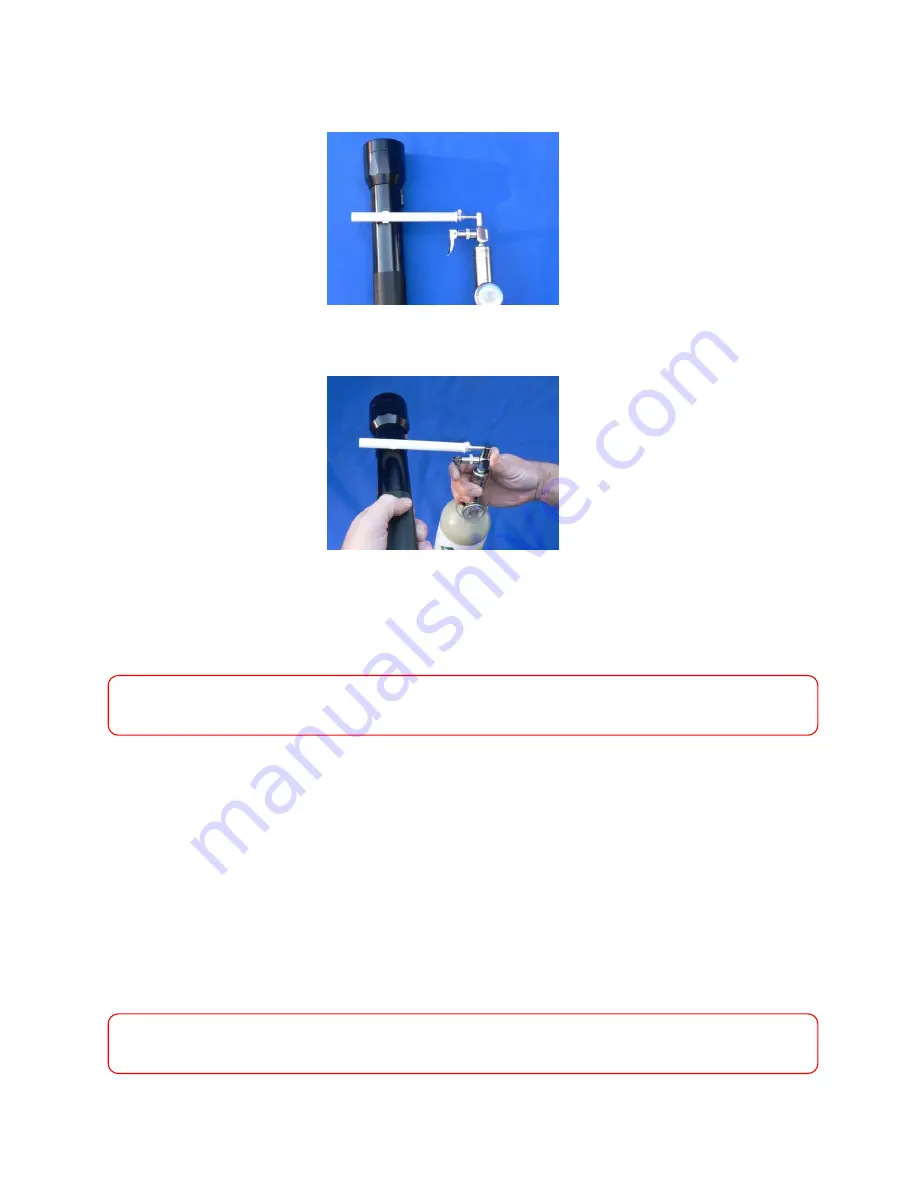
9
4.
Press the Calibration Connector Tube nipple into the inlet port of the PAS V and
hold tightly in place.
5. Hold the PAS V with your thumb near the Sensor Control Button and press the
regulator button so the gas begins flowing.
6.
Immediately, AND WHILE THE GAS IS STILL FLOWING, press and release the
Sensor Control Button which will draw a sample of gas into the unit.
7.
When the pump completes its cycle (approx. 5 seconds) and the PMP light goes
out, release the regulator button to stop the gas flow.
NOTE
:
It is essential that the gas is flowing during the entire 5 seconds the pump is
running.
8.
Disconnect the Calibration Connector Tube and observe the bar-graph display.
All but one
of the bars should light up. There should be two green, four yellow
and two of the three red bars lit 15-20 seconds from the time the pump stops.
9. Record the number of red bars that light up (this should be two). Repeat the
sensitivity test two more times noting each time how many red bars light up. If in
two out of the three tests, two red bars are illuminated, the sensitivity of the unit
is satisfactory. Note that the number of red bars lit may vary by one in either
direction because of variations in the rate and strength of blowing through the
simulator. This is the reason for conducting three tests. If two out of the three
tests do not result in the lighting of red bars (a blinking light counts), then the unit
should be recalibrated following the calibration procedure on the following page.
NOTE:
A minimum of 5 minutes should pass between each sensitivity test and an
air blank should precede each sensitivity test.


































